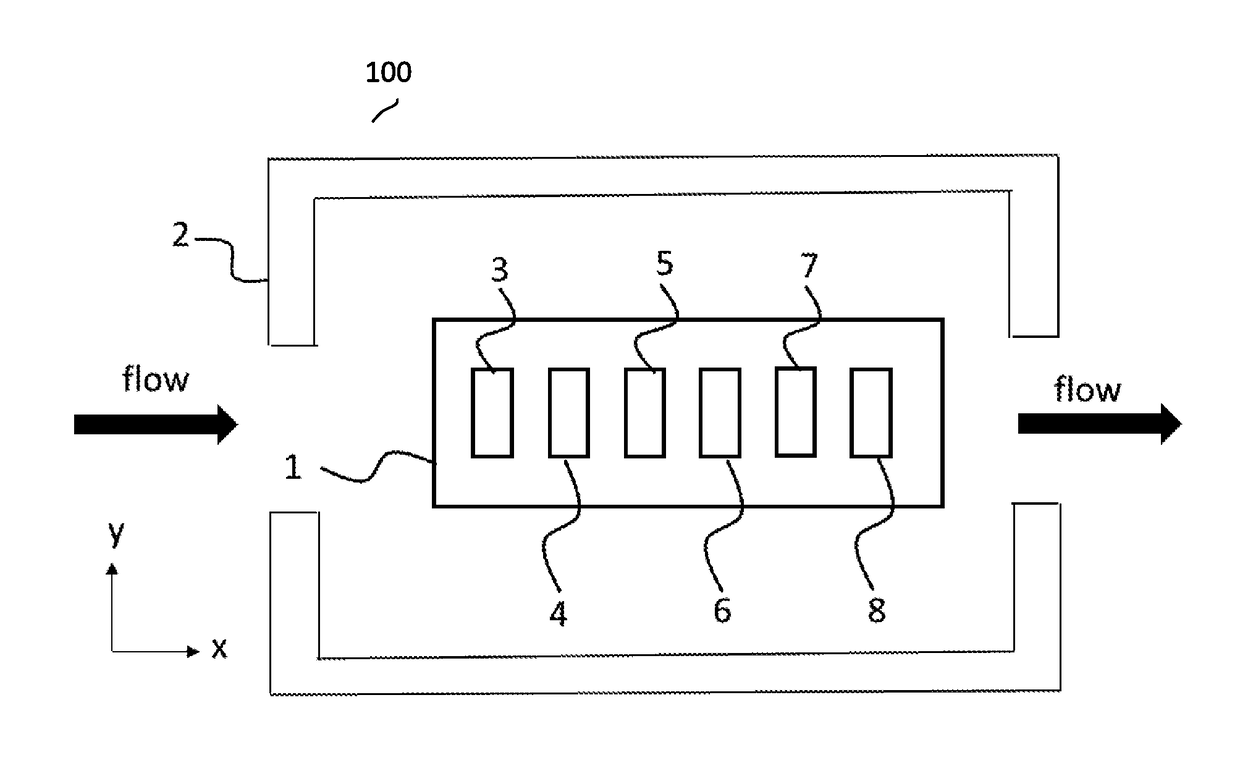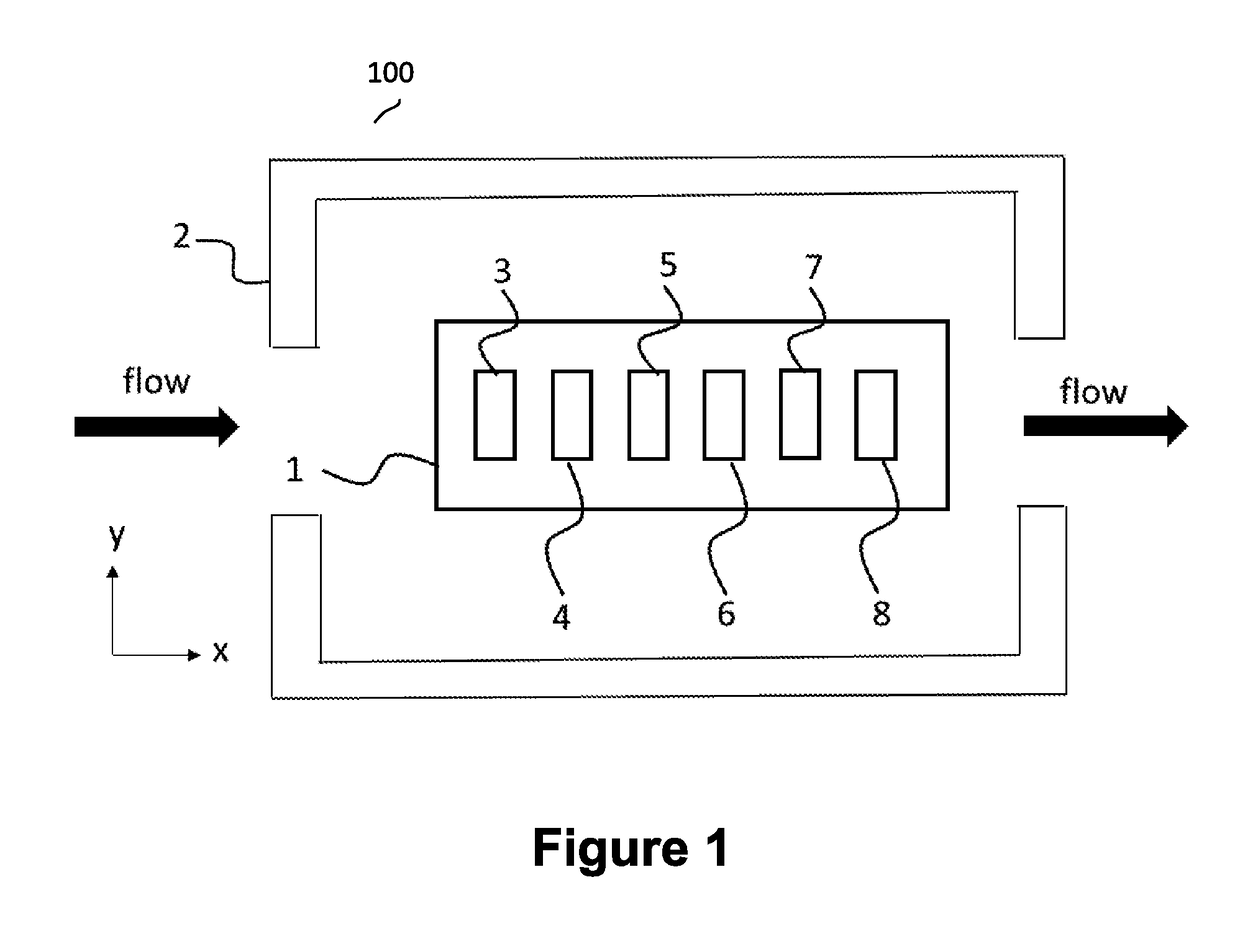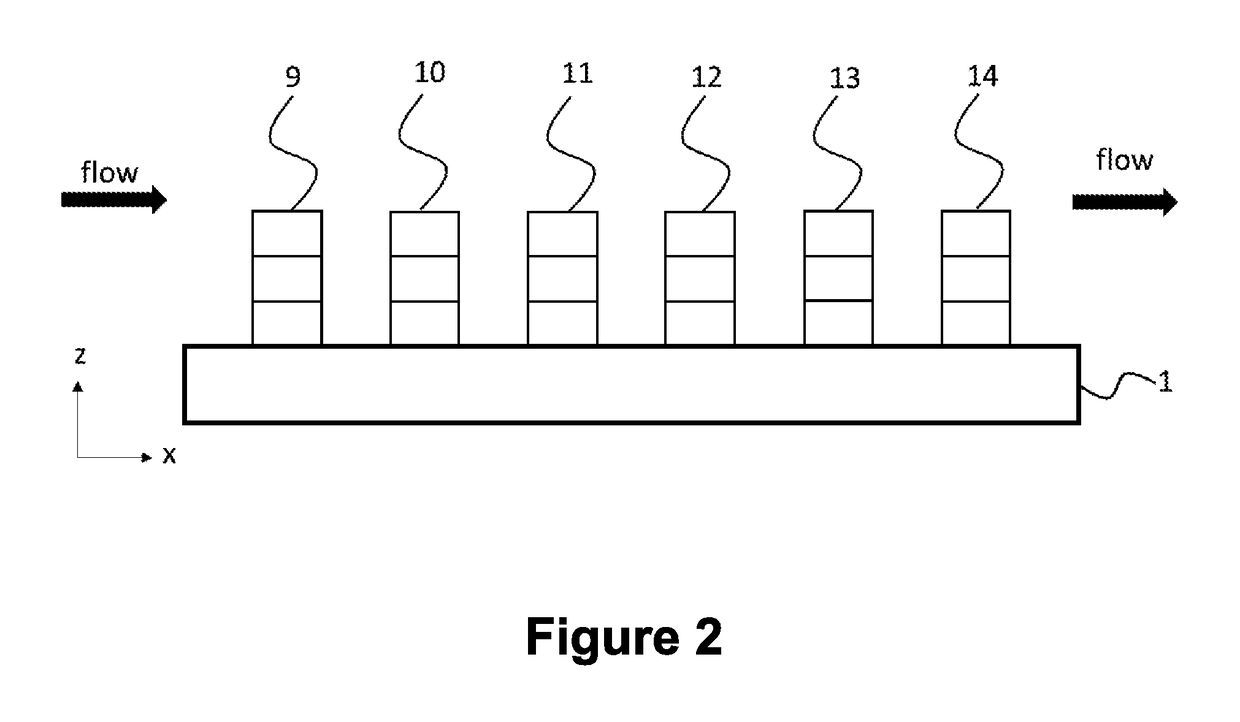Multi-Dimensional Cross-Reactive Array for Chemical Sensing
a cross-reactive array and chemical sensing technology, applied in the direction of fluorescence/phosphorescence, instruments, material analysis, etc., can solve the problems of poor identification of components in the mixture sample of all cross-reactive arrays, and achieve the effect of reducing the effective device for identifying the mixture sample, reducing the distance needed to separate the components in the mixture, and reducing the diffusion ra
- Summary
- Abstract
- Description
- Claims
- Application Information
AI Technical Summary
Benefits of technology
Problems solved by technology
Method used
Image
Examples
Embodiment Construction
[0020]Methods of making artificial olfactory systems (cross-reactive arrays) rely on non-specific sensors which respond in concert generating a pattern that can be identified as the odorant impinging upon the sensor. The response pattern is formed by using chemically different sensors who response to a single analyte is varied. The difference of the sensors on the molecular level generates the varying changes in the transduction and features such as total magnitude of response, percent change of response, fitting of polynomial lines, and amount of spectral change are used to make the descriptive response patterns.
[0021]This invention adds more descriptive information to the response pattern by arranging the elements of a cross-reactive array in a 2 dimensional manner, the first dimension is the direction of the sample flow in the sensor so that the sample interacts with each sensor in a sequential manner through the gas or liquid sample carrier medium. This is shown in FIG. 1 where ...
PUM
| Property | Measurement | Unit |
|---|---|---|
| sizes | aaaaa | aaaaa |
| sizes | aaaaa | aaaaa |
| sizes | aaaaa | aaaaa |
Abstract
Description
Claims
Application Information
 Login to View More
Login to View More - R&D
- Intellectual Property
- Life Sciences
- Materials
- Tech Scout
- Unparalleled Data Quality
- Higher Quality Content
- 60% Fewer Hallucinations
Browse by: Latest US Patents, China's latest patents, Technical Efficacy Thesaurus, Application Domain, Technology Topic, Popular Technical Reports.
© 2025 PatSnap. All rights reserved.Legal|Privacy policy|Modern Slavery Act Transparency Statement|Sitemap|About US| Contact US: help@patsnap.com



